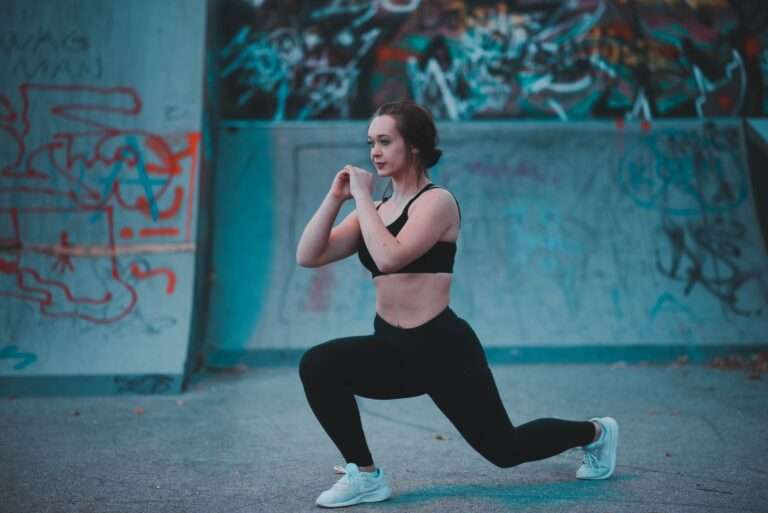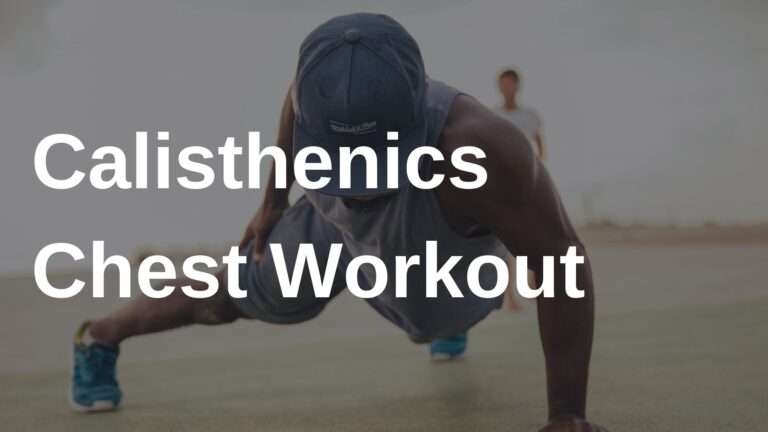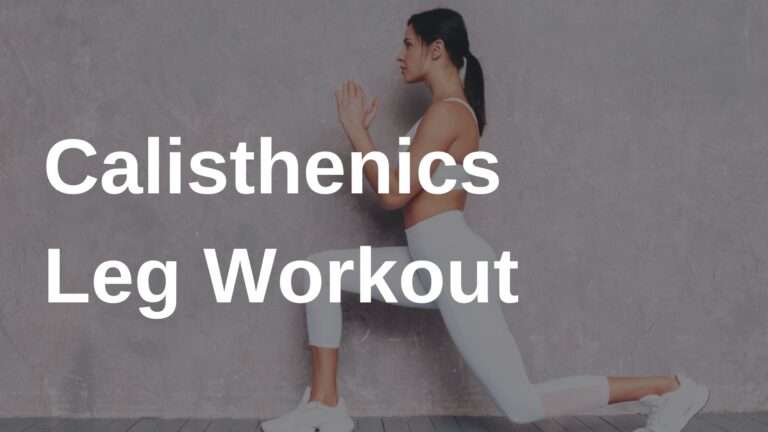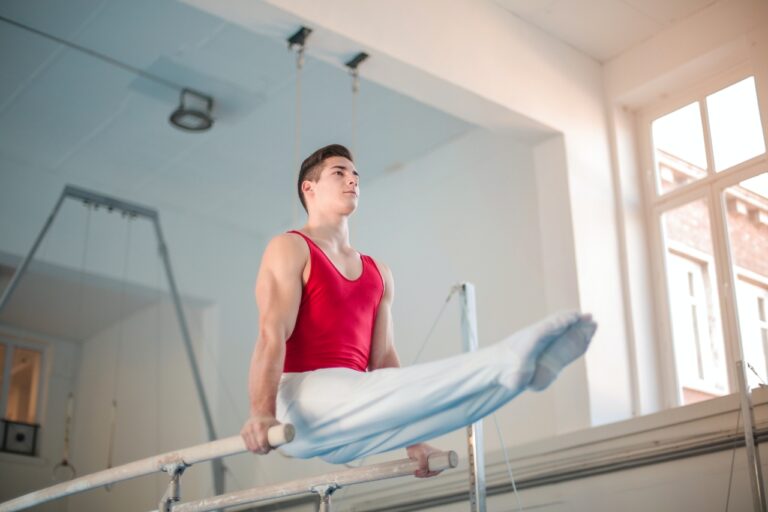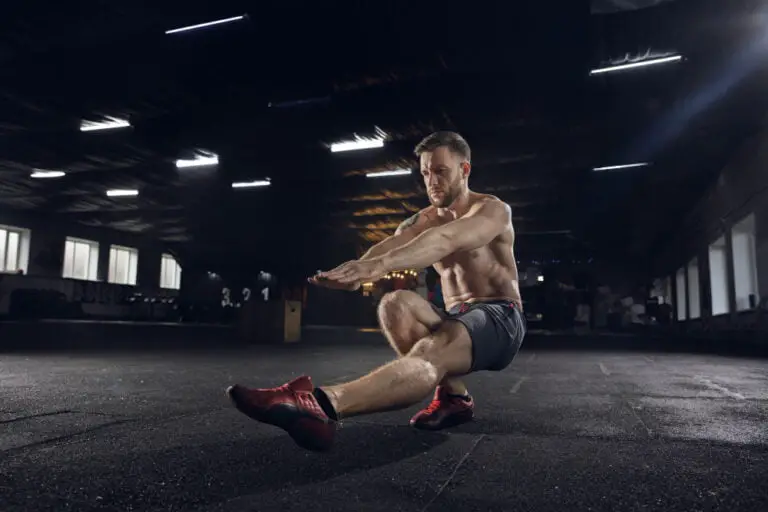7 Days calisthenics Workout Plan – Start your journey here!
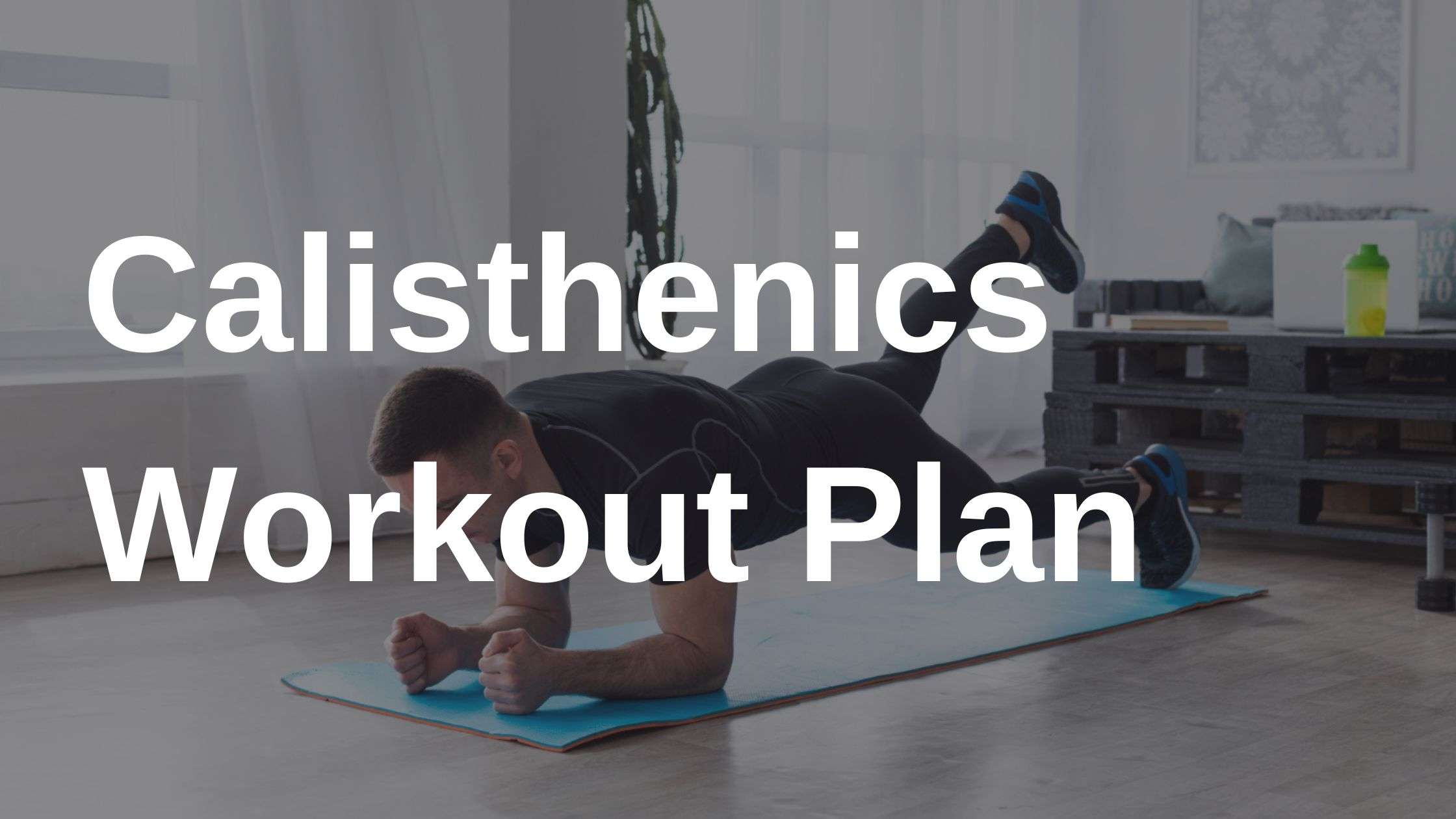
Certainly! Calisthenics is a form of exercise that centers around mastering fundamental bodyweight movements. These include push-ups, pull-ups, dips, squats, lunges, and planks.
The primary emphasis in calisthenics is on engaging multiple muscle groups simultaneously, fostering functional strength and stability. This holistic approach to training contributes to a well-rounded and balanced physique.
One of the key benefits of calisthenics is its focus on body control and coordination. By performing these compound movements, individuals not only build strength but also enhance proprioception and spatial awareness.
(proprioception refers to the body’s ability to sense its position in space, and calisthenics exercises help develop a heightened awareness of one’s body movements.)
Objective of This Workout Plan
The main objective of this calisthenics workout plan is to help individuals build strength, flexibility, and endurance using bodyweight exercises. It is designed to provide a comprehensive approach to fitness by targeting different muscle groups and incorporating a variety of movements to promote overall physical well-being.
Additionally, the plan aims to encourage consistency, progression, and proper rest and recovery to maximize results and minimize the risk of injury. Ultimately, the goal is to empower individuals to achieve their fitness goals, whether they are beginners starting their fitness journey or experienced athletes looking to enhance their performance.
Importance of Equipment
Although calisthenics mainly involves bodyweight exercises, calisthenics equipment is important in a workout plan. It helps by adding resistance, offering variety, targeting specific muscles, promoting gradual increases in intensity, and improving stability and balance. Here are our top recommendations for 8 pieces of calisthenic equipment to enhance your home gym and suit your fitness goals!
Pull-up bar: A pull-up bar is essential for calisthenics back workout, as it allows you to do various upper body exercises such as pull-ups, chin-ups, muscle-ups, and more.
Gymnastic rings: Gymnastic rings are another great tool for learning calisthenics skills, as they add instability and challenge to your exercises.
Parallettes: Parallettes are small parallel bars that you can use for calisthenics chest workout. They elevate your hands from the ground and allow you to do a deeper range of motion and more advanced skills. You can use them for L-sits, handstands, planches, and more.
Resistance bands: Resistance bands can be used to make exercises easier or harder, depending on your level and goal. You can also use them for mobility and warm-up exercises.
Weight vest: A weight vest is a vest that has pockets for adding weights. You can use it to increase the difficulty and intensity of your calisthenics exercises by adding extra load to your body.
Ab wheel: An ab wheel is a wheel with handles that you can use for core exercises. You can roll the wheel forward and backward from a kneeling or standing position, engaging your abs, back, and arms. It is a challenging and effective exercise for calisthenics.
Exercises for Calisthenics
This is the list of bodyweight exercises you can select and create your bodyweight workout plan. there are many variations of these exercises according to the level of difficulty.
Bicycle Crunches:
- Start by lying on your back with your hands behind your head and legs lifted, knees bent at a 90-degree angle.
- Bring your right elbow towards your left knee while simultaneously straightening your right leg, twisting your torso.
- Alternate sides, bringing your left elbow towards your right knee while straightening your left leg.
- Continue alternating in a pedaling motion while keeping your core engaged.
Russian Twists:
- Sit on the floor with your knees bent and feet flat, leaning back slightly to engage your core.
- Hold your hands together in front of your chest or clasp them together.
- Twist your torso to the right, bringing your hands or clasped hands towards the floor beside your right hip.
- Return to the center and then twist to the left, bringing your hands towards the left side.
- Continue alternating sides while keeping your core tight and back straight.
Leg Raises:
- Lie flat on your back with your arms by your sides or under your glutes for support.
- Keeping your legs straight, lift them off the ground until they are perpendicular to the floor.
- Slowly lower your legs back down towards the ground without letting them touch, engaging your core to control the movement.
- Avoid arching your back and focus on using your abdominal muscles.
Cobra Stretch:
- Lie face down on the floor with your palms flat on the ground under your shoulders.
- Press through your hands to lift your chest off the ground, extending your arms while keeping your hips and pelvis on the floor.
- Engage your back muscles and lift your gaze upwards, feeling a stretch through your abdomen and chest.
- Hold the stretch for a few breaths, then release back down to the starting position.
Child’s Pose:
- Start on your hands and knees with your wrists under your shoulders and knees under your hips.
- Sit back on your heels and reach your arms forward, lowering your chest towards the floor.
- Rest your forehead on the ground (or a yoga block if more comfortable) and extend your arms, feeling a stretch through your back, shoulders, and hips.
- Hold the pose and focus on deep breathing to relax into the stretch.
Burpees:
- Start standing with your feet shoulder-width apart.
- Squat down and place your hands on the ground in front of you.
- Jump your feet back into a plank position, perform a push-up if desired.
- Jump your feet back towards your hands and explosively jump upwards, reaching your arms overhead.
- Land softly and immediately lower back down into the next repetition.
Mountain Climbers:
- Begin in a plank position with your hands directly under your shoulders and your body in a straight line from head to heels.
- Engage your core and drive one knee towards your chest, then quickly switch legs, alternating in a running motion.
- Keep your hips level and your movements controlled to maximize the effectiveness of the exercise.
Bodyweight Rows:
- Find a sturdy horizontal bar or set up a suspension trainer at chest height.
- Grip the bar with an overhand grip, palms facing away from you, and walk your feet forward so your body is at an angle.
- Keep your body in a straight line from head to heels and pull your chest towards the bar by retracting your shoulder blades.
- Lower yourself back down with control and repeat for the desired number of repetitions.
Push-Ups:
- Start in a plank position with your hands slightly wider than shoulder-width apart and your body in a straight line from head to heels.
- Lower your body towards the ground by bending your elbows, keeping them close to your sides.
- Lower until your chest almost touches the ground, then push back up to the starting position, fully extending your arms.
- Keep your core engaged and maintain a straight line throughout the movement.
Plank:
- Begin in a plank position with your hands directly under your shoulders and your body in a straight line from head to heels.
- Engage your core muscles and hold the position, keeping your hips level and avoiding sagging or arching your back.
- Focus on breathing deeply and holding the plank for as long as you can while maintaining proper form.
Bodyweight Squats:
- Stand with your feet shoulder-width apart, toes pointing slightly outwards.
- Keeping your chest up and back straight, lower your body by bending your knees and pushing your hips back.
- Lower until your thighs are parallel to the ground, then push through your heels to return to the starting position.
- Keep your knees tracking in line with your toes and maintain a neutral spine throughout the movement.
Lunges:
- Start standing with your feet hip-width apart.
- Take a large step forward with one foot and lower your body until both knees are bent at 90-degree angles.
- Ensure your front knee is directly above your ankle and your back knee is hovering just above the ground.
- Push through the heel of your front foot to return to the starting position, then repeat on the other side.
Calf Raises:
- Stand with your feet hip-width apart near a wall or stable surface for balance.
- Rise up onto the balls of your feet, lifting your heels as high as you can.
- Hold the position briefly at the top, then lower your heels back down towards the ground.
- Focus on squeezing your calf muscles at the top of the movement for maximum contraction.
Glute Bridges:
- Lie on your back with your knees bent and feet flat on the ground, hip-width apart.
- Engage your core and squeeze your glutes as you lift your hips towards the ceiling, forming a straight line from shoulders to knees.
- Hold the top position briefly, then lower your hips back down towards the ground with control.
- Avoid overarching your lower back and focus on using your glutes to lift your hips.
Assisted Pull-Ups or Bodyweight Rows:
- For assisted pull-ups, use a resistance band looped around a pull-up bar and place one foot or knee in the band for assistance.
- For bodyweight rows, set up a suspension trainer or use a low bar at chest height.
- Grip the bar with an overhand grip, palms facing away from you, and walk your feet forward so your body is at an angle.
- Keep your body in a straight line from head to heels and pull your chest towards the bar by retracting your shoulder blades.
- Lower yourself back down with control and repeat for the desired number of repetitions.
Dips:
- Find parallel bars or use the edge of a sturdy surface like a bench or chair.
- Grip the bars with your palms facing inward and arms fully extended.
- Lower your body by bending your elbows until your upper arms are parallel to the ground.
- Push through your palms to straighten your arms and return to the starting position, fully extending your elbows.
- Keep your chest up and avoid letting your shoulders hunch forward as you perform the movement.
Example of Calisthenics Workout Plan
This sample calisthenics workout plan or routine is designed for beginners and can be adjusted based on individual fitness levels and goals.
Day 1: Upper Body Focus
- Push-Ups: 3 sets x 10 reps
- Assisted Pull-Ups or Bodyweight Rows: 3 sets x 8 reps
- Dips (using parallel bars or sturdy furniture): 3 sets x 10 reps
- Plank: 3 sets x 30 seconds
Day 2: Lower Body Focus
- Bodyweight Squats: 3 sets x 12 reps
- Lunges: 3 sets x 10 reps per leg
- Calf Raises: 3 sets x 15 reps
- Glute Bridges: 3 sets x 12 reps
Day 3: Rest or Active Recovery
Engage in light stretching, yoga, or low-impact activities such as walking or swimming to promote recovery and flexibility.
Day 4: Full Body Circuit
Perform each exercise back-to-back with minimal rest between sets. Complete the circuit 3 times.
- Burpees: 10 reps
- Mountain Climbers: 20 reps
- Bodyweight Rows: 8 reps
- Push-Ups: 10 reps
- Plank: 30 seconds
Day 5: Active Rest
Engage in low-intensity physical activities such as stretching, cycling, or playing sports to stay active while giving your muscles a break from structured workouts.
Day 6: Core and Flexibility
- Bicycle Crunches: 3 sets x 15 reps per side
- Russian Twists: 3 sets x 12 reps per side
- Leg Raises: 3 sets x 10 reps
- Cobra Stretch: Hold for 30 seconds
- Child’s Pose: Hold for 30 seconds
Day 7: Rest and Recovery
Take a well-deserved rest day to allow your body to recover and prepare for the upcoming week of training.
You can alter the exercises based on your fitness level. You can add or remove any exercises and customize workout plan according to you.
Progression and Variation in Calisthenics
You need to track your progress and adjust your plan accordingly. You should keep a log of your workouts, including the exercises, reps, sets, rest, and time. You should also measure your body weight, body fat percentage, and body measurements every week.
You should compare your results with your goal and see if you are moving in the right direction. If you are, you should keep doing what you are doing. If you are not, you should make some changes to your plan.
Here are some ways to change your bodyweight workout plan:
- If you want to increase the difficulty, you can increase the reps, sets, weight, or range of motion of the exercises, decrease the rest periods, or switch to harder variations of the exercises.
- If you want to decrease the difficulty, you can decrease the reps, sets, weight, or range of motion of the exercises, increase the rest periods, or switch to easier variations of the exercises.
- If you want to add some variety, you can change the order, tempo, or angle of the exercises, add some new exercises, or try some different formats, such as pyramids, ladders, or intervals.
Conclusion
Calisthenics is a great way to work out your entire body without spending a lot of money or time. By following these steps, you can create a calisthenics workout plan that suits your needs and preferences.
Remember to warm up before each session, cool down after each session, and stretch regularly to prevent injuries and improve recovery.
Also, remember to eat a balanced diet, drink plenty of water, and get enough sleep to support your training and health. With consistency and dedication, you will see amazing results in no time. Good luck and have fun!

